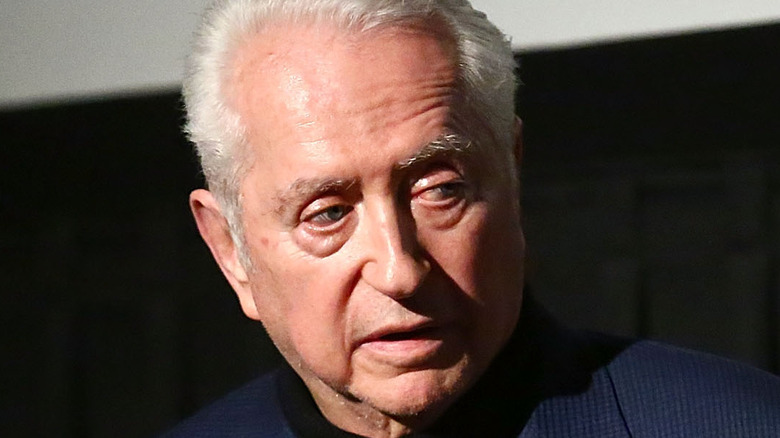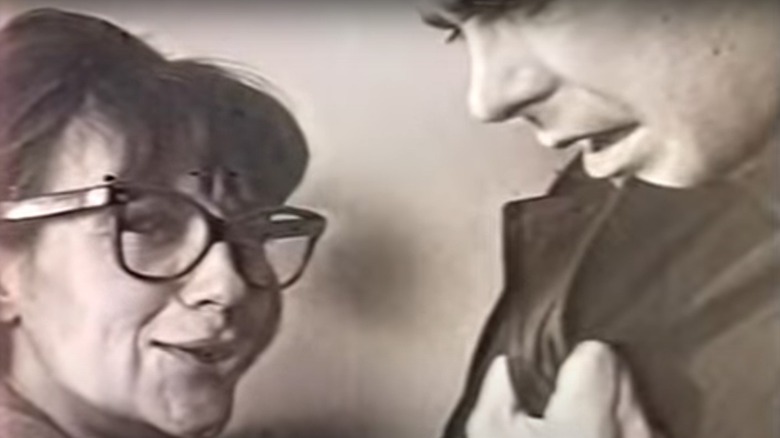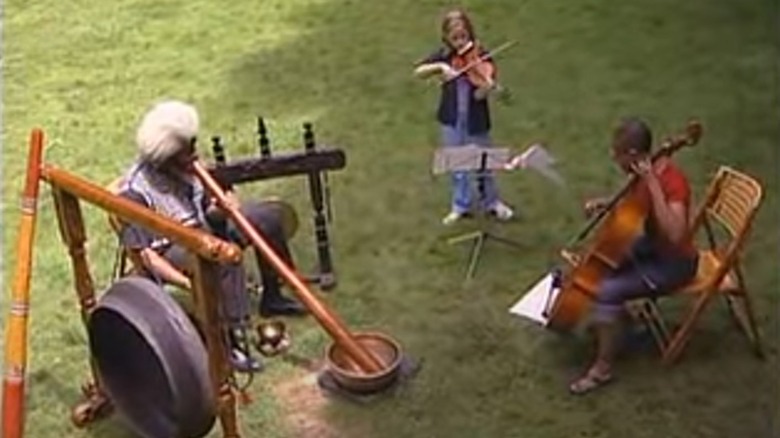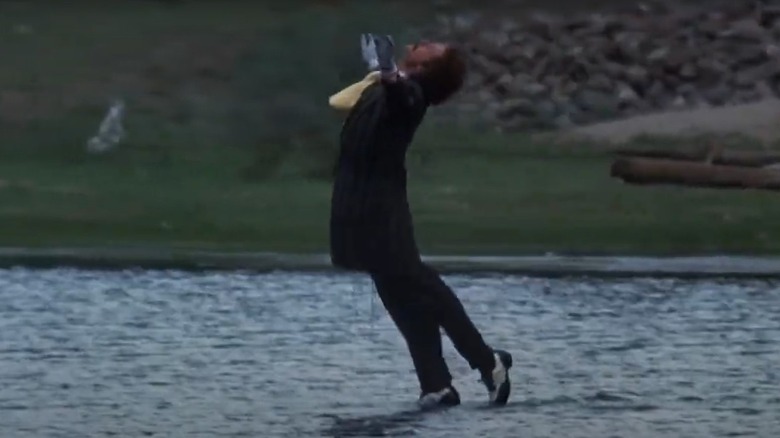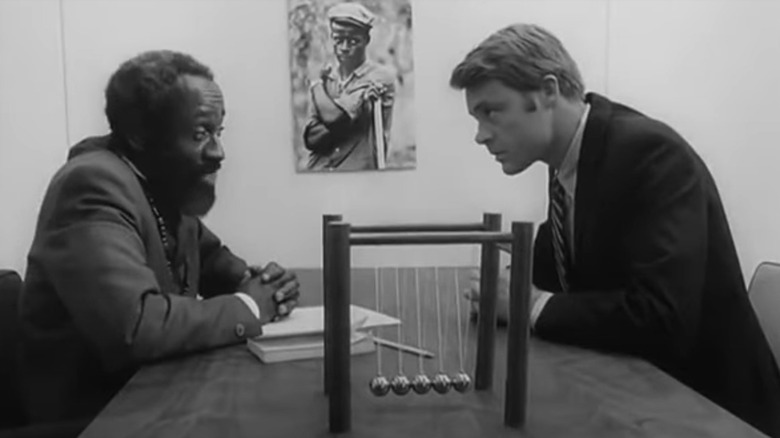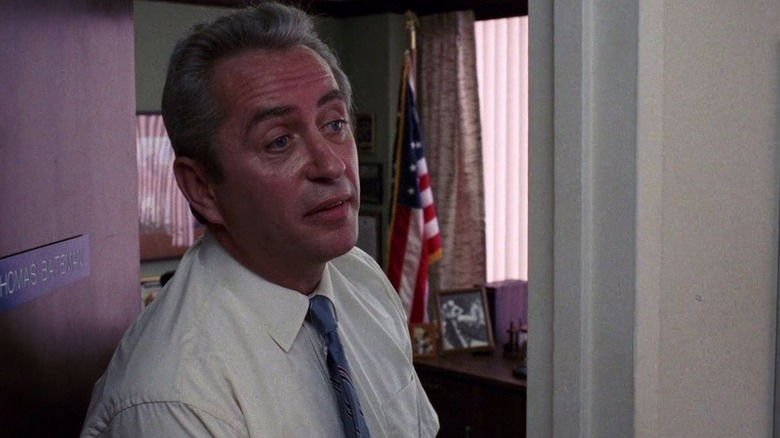The Best Robert Downey Sr. Movies Ranked
On July 7, 2021, Robert Downey Jr. announced the death of his father and namesake, Robert Downey Sr., who had passed away the night before at the age of 85 "after years of enduring the ravages of Parkinson's." He described his dad as having "remained remarkably optimistic" during the final days of his life, and remembered him as a "true maverick filmmaker."
Downey Sr. was, without a doubt, an ambitious and passionate contributor to movie making history. His catalogue of work included retrospectively monumental moments, like the on screen debut of his son, while generally staying on the rough side of the studio system tracks. Experimental, counterculture flicks filled his resume during the '60s and '70s. Weirdness was almost always on the table — amnesiac Old West song-and-dance men could parachute into positions as messianic miracle workers, or humans could sub in for the animals at a local pound waiting to be put down. Sometimes, Downey took a turn on the other side of the camera as well, making appearances in a handful of high-profile motion pictures. Here, we'll take a look at some of the late filmmaker's best received movies, whether as an actor, writer, or director.
1. Robert Downey Sr.'s "Chafed Elbows" brought the weirdness
"Experimental" was the watchword for much of Robert Downey Sr.'s work behind the camera, and it didn't get much more experimental than "Chafed Elbows," a 1966 film that took the old standard of movies being shot at 24 frames per second and told it to relax before it gave itself a hernia — "Chafed Elbows" is told through the use of still images, voiced over as they march across the screen. It can't be stressed enough that this was actually one of the more normal aspects of the film.
The movie tells the story of a man in the midst of a yearly breakdown, who over the course of the narrative gives birth to money, signs up for welfare, marries his mom, and flat-out murders a cop. None of that is made up, and when combined with the film's bonkers style of presentation, many critics weren't sure what to do with "Chafed Elbows" when it first came out. Some people still aren't sure.
2. "Rittenhouse Square" was one of Downey's most low-key works
Robert Downey Sr.'s final directorial work came in 2005 with "Rittenhouse Square," his first and only documentary. Compared to the lion's share of his filmography, it's a quiet, simple movie — suspiciously so, almost.
Foregoing trippy visuals and bubble-off-plumb, stick-it-to-the-normies narrative structures, "Rittenhouse Square" was simple cinema verite. Downey pointed a camera at the denizens of the Philadelphia park from which the documentary takes its name and captured moments of real life from the early to mid-2000s, showcasing "a year in the life of an American park" as the seasons change. Musicians meet on the grass to play together. Snowball-based is fought to the bitter end. Overall, it's a bittersweet and deeply human look at the real world, directed by a man who spent much of his life trying to fit as much weirdness into his movies as possible.
Even still, critics couldn't come to a consensus as to how they felt about a new, more pensive version of Downey. Maybe it's a testament to his overall career that Downey's last turn in the director's chair was met with deeply divided reviews.
3. With "Greaser's Palace," Robert Downey brought the weird again
It was July of 1972. While "Deliverance" was tearing up the box office and convincing a generation of potential tourists to reconsider their upcoming trips to the American South, another movie was making the rounds and harshing squares' mellows for completely different reasons. Or at least mostly different reasons.
"Greaser's Palace" is a tough one to pin down. Its subject matter is designed to unsettle. A performer with no memory of his origins arrives in a frontier town and starts performing very Bible-adjacent miracles, dancing across the top of the water and resurrecting the dead. There is also, and this is unavoidable, a significant amount of constipation wrapped up in the plot. As we may have alluded, it wasn't a movie that was designed to be an easy watch.
Needless to say, "Greaser's Palace" received critical analysis that ran the gamut. Some reviewers saw it as a brilliant piece of counterculture cinema, capable of changing minds and hearts if given the opportunity. Others were less enthusiastic — the New York Times decried the film's preposterous $1 million estimated budget, mourning speculatively that, to their eyes, "Just a few years ago, Downey could have made a couple of dozen movies with that money."
In any case, it shouldn't be a surprise that "Greaser's Palace" straddled the line of acceptance, and maintains a right-down-the-middle 50% approval rate on Rotten Tomatoes nearly 50 years after its debut.
4. Downey turned heads with "Putney Swope"
"Putney Swope" might have been Robert Downey Sr.'s most far-reaching work as a writer/director. The film dissects the American advertising industry, race relations, and the corruptive power of money, all while sporting a poster that helpfully flips its audience the bird.
The eponymous Putney Swope is an advertising executive, carried to new heights by a group of self-serving colleagues when the head of the company dies. His fellow board members, forced to vote on new leadership and not allowed to vote for themselves, all cast their votes for Putney, individually believing that there's no way he'll be elected.
Like much of Downey's work, "Putney Swope" seemed designed to turn heads and rattle cages. In that regard, it succeeded remarkably, inspiring generations of aspiring independent filmmakers. In 1997, the movie "Boogie Nights" featured a character played by Don Cheadle named after the movie's protagonist, and even included Downey in a cameo role as further tribute to his work on the picture.
5. "To Live and Die in L.A." gave Downey one of his best known acting roles
Many filmmakers strive to create timeless art — motion pictures with a nebulous aesthetic, impossible to place on a timeline based on looks or soundtrack alone. Sometimes, pulling this off can become a director's most important goal. Other times, Dean Stockwell plays a cigar-chomping lawyer while Wang Chung provides a film's entire soundtrack. There are different schools of thought.
1985's "To Live and Die in L.A." is — even according to most critics — an '80s movies first and foremost. "CSI's" William Peterson and an unsettlingly young Willem Dafoe star as members of the Secret Service, tasked with taking down a counterfeiting operation. It's the sort of two-man show on the subject of obsession that Dafoe would revisit with "The Lighthouse," albeit with less synthesizer in the background. The duo's supervisor is Thomas Bateman, played by Robert Downey Sr. The film, directed and co-written by "The French Connection's" William Friedkin, remains a critical high point of Downey's acting career, holding a Rotten Tomatoes audience approval score of 91%.
